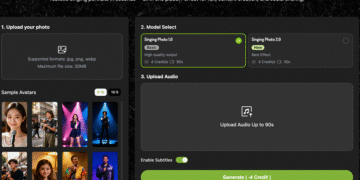In today’s financial industry, borrower verification plays a critical role in maintaining trust and security. Without careful checks, lenders risk exposing themselves to fraud, defaults, and reputational damage. Strong systems are therefore needed to ensure every applicant is thoroughly examined before credit is extended.
Among the platforms leading this responsibility, loan DB provides a comprehensive approach that balances speed with security. By using advanced technology and compliance-focused processes, it ensures that every borrower profile is fully validated. This combination reduces risks for lenders while delivering a smoother experience for borrowers.
Borrower Verification Process in Loan DB
1. Data Collection
The first step involves gathering essential borrower information in a structured and secure way. Applicants are asked to provide personal details, banking history, income records, and employment data, which forms the foundation of verification. This information is captured through encrypted systems that protect sensitive data.
With proper data collection, the likelihood of errors and delays is minimized. Organized borrower details ensure smooth transitions into later checks such as income and identity verification. A well-structured foundation enables lenders to develop a clear borrower profile. This creates efficiency while strengthening trust between applicants and financial institutions.
2. Identity Verification
Identity verification confirms that the applicant is who they claim to be. Borrowers submit government-issued documents like national IDs, passports, or driving licenses, which are cross-checked against official databases. Loan DB helps streamline this process by automating cross-checks and improving accuracy. This reduces risks of impersonation and identity theft, protecting lenders from fraudulent activity.
In addition to document checks, modern systems also integrate biometric verification tools. These include fingerprint scanning, facial recognition, and real-time liveness tests. Such multi-layered verification methods add extra security. Lenders therefore gain confidence that only genuine individuals proceed through the application process.
3. Address Confirmation
Verifying the borrower’s residential address ensures stability and traceability. Applicants typically submit utility bills, property documents, or official correspondence as proof of residence. This information is checked against government or postal records for accuracy. Confirmed addresses provide assurance that the borrower can be reliably contacted.
Address confirmation also supports compliance requirements for anti-fraud and KYC regulations. A stable residence history often reflects financial reliability and long-term commitment. This information can influence lending decisions, as borrowers with confirmed addresses are seen as lower risk. It provides an important safeguard for lenders during evaluation.
4. Employment Verification
Employment verification helps lenders assess an applicant’s financial dependability. Borrowers provide details of their current employer and past job history, which are verified through official sources or direct contact. Steady employment records indicate stability and reduce the chance of repayment issues.
This verification ensures that applicants are genuinely employed and capable of maintaining income streams. Any false claims are detected early, protecting lenders from unnecessary risks. Loan DB simplifies this process by organizing employment details and verification results efficiently. A clear employment history serves as an important foundation for evaluating repayment potential.
5. Income Validation
Income validation focuses on confirming the borrower’s earning capacity. Applicants submit payslips, tax filings, or bank statements as proof of income. Lenders review these documents to ensure declared earnings match real financial activity. This step prevents exaggerated income claims and unrealistic applications.
Advanced algorithms analyze patterns such as average monthly income and debt-to-income ratios. These insights highlight the borrower’s repayment ability and financial discipline. By validating income thoroughly, lenders avoid approving loans that could lead to default. Borrowers also benefit from loans tailored realistically to their capacity.
6. Credit History Check
A borrower’s credit history is one of the strongest predictors of repayment behavior. Credit bureau data reveals repayment patterns, outstanding balances, and defaults. A healthy record shows financial discipline, while poor history indicates higher risk. This step helps lenders predict future repayment consistency.
Through direct integrations, loan DB provides lenders with quick and reliable access to detailed credit histories. This transparency allows for fairer lending decisions supported by factual records. With this insight, lenders can confidently approve or decline applications. Borrowers also benefit by building stronger credit reputations over time.
7. Document Verification
Applicants must submit authentic documents such as identification cards, bank statements, and utility bills. Automated systems check for tampering, while trained professionals confirm legitimacy. This dual approach strengthens the accuracy of document verification. False or altered documents are immediately flagged for review.
By validating all submissions, lenders ensure that applications are genuine. The process significantly reduces risks of fraudulent activity. Verified documents also provide reliable evidence for record-keeping and compliance. This creates transparency in borrower evaluation while protecting financial institutions from potential losses.
8. Fraud Detection
Fraud detection is a proactive safeguard built into the verification system. Artificial intelligence and machine learning tools scan applications for suspicious activity. Duplicate records, mismatched information, and unusual patterns are identified quickly. These alerts enable lenders to review cases thoroughly.
Fraud detection adapts continuously to evolving tactics. For example, false employment records or fake addresses can be identified almost instantly. By catching risks early, lenders protect their financial stability. Borrowers who follow genuine processes also benefit, as fraudulent applicants are filtered out of the system.
9. KYC Compliance
Know Your Customer compliance ensures adherence to national and international regulations. Identity, address, and financial background checks are required to prevent money laundering and terrorist financing. Lenders are legally obligated to perform these checks before extending credit.
Loan DB integrates automated KYC processes, reducing delays and increasing accuracy. By handling compliance seamlessly, it allows lenders to focus on customer service while staying aligned with regulations. Borrowers also experience smoother processes. Strong compliance ultimately strengthens the trustworthiness of the financial ecosystem.
10. Approval Workflow
After verification steps are completed, results are organized into a structured approval workflow. A comprehensive report highlights the borrower’s financial position, identity confirmation, and repayment capacity. Decision-makers use this report to approve or reject applications efficiently.
The workflow minimizes guesswork and provides clear, evidence-based insights. This structured process reduces human error while improving turnaround times. Borrowers benefit from quicker responses, while lenders maintain control over risk exposure. Approval workflows create balance between efficiency and responsibility.
11. Record Management
Proper record management is essential for accountability and transparency. Borrower data, verification results, and supporting documents are securely stored in centralized systems. Only authorized personnel can access these records, ensuring confidentiality. Strong data encryption protects sensitive borrower information.
Effective record management also supports regulatory audits and dispute resolution. With easily retrievable information, lenders can provide accurate responses when needed. These systems establish clear audit trails for compliance. By maintaining organized records, financial institutions strengthen reliability and operational efficiency.
12. Ongoing Monitoring
Verification is not limited to loan approval but extends into ongoing monitoring. Borrowers’ financial activities, repayment patterns, and changing circumstances are tracked regularly. This proactive oversight helps lenders identify risks early. Any negative behavior can trigger alerts for timely action.
With continuous updates, loan DB ensures borrower profiles remain accurate over time. This allows lenders to renegotiate terms or intervene before defaults occur. Borrowers also benefit from this system, as early detection often leads to supportive solutions. Ongoing monitoring thus safeguards both lenders and applicants.
Why to Choose Black DB?
Black DB is a specialized loan database sales company, offering loan databases, employee loan databases, loan application databases, real-time loan databases, and more. It delivers secure, high-quality, and customizable database solutions designed to meet the unique needs of financial institutions.
By providing reliable and up-to-date resources, Black DB helps organizations streamline borrower verification, improve efficiency, and strengthen compliance. For more details, you can visit https://xn--vk1bl3bv6n42p.com/, where its comprehensive product range ensures that lenders have access to accurate and relevant data, making it a trusted partner for businesses that value security and performance.
Closing Remarks
Borrower verification is essential for maintaining safety, transparency, and trust in the lending process. From identity checks to fraud detection, each step contributes to building a reliable borrower profile. Strong processes reduce risks while encouraging responsible financial behavior across the industry.
By blending advanced technology, compliance, and monitoring, loan DB has developed a robust model for borrower verification. Its multi-layered approach ensures fair decisions, protects institutions, and improves borrower experiences. This balanced system sets a benchmark for effective, trustworthy, and future-ready lending practices.











































































